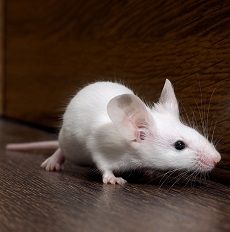Article
Mouse Allergens in Schools Linked to Asthma Exacerbations
Author(s):
A new study of inner city schools found evidence that high levels of mouse allergens correlated with hindered lung function and an increase in sick days caused by asthma symptoms.

Published yesterday in JAMA Pediatrics, a new investigation of allergens in the learning environments and homes of schoolchildren sought to document common factors in the exacerbation of childhood asthma morbidity. The School Inner-City Asthma Study is a prospective cohort study led by William J. Sheehan, MD, of the Boston Children’s Hospital.
The final results of the study included 284 children from about three dozen schools in the northeastern United States. Each year between March 2008 and August 2013, about 70 students with asthma representing seven different schools were enrolled and clinically studied for the course of the year.
The average age of the students was 8 years old, and, according to the study, “Inclusion criteria included asthma diagnosed by a physician for at least one year and at least one of the following: current daily preventive asthma medication use, wheezing in the past year, or an unscheduled health care visit for asthma in the past year.” Students with any other lung or cardiovascular disease were excluded.
The children were tested for lung function and aeroallergen sensitivity to tree pollen, grass, ragweed, dust mites, cat, dog, mouse, rat, cockroach, and mold at baseline. The researchers collected dust samples twice over the course of the year from the bedroom and classroom of each participant.
Telephone follow-ups occurred at 3, 6, 9, and 12 months to gauge asthma symptoms and exacerbations in the two weeks preceding. For this, the researchers used three variables based on the symptoms of wheezing, chest tightness, or cough: number of days with the symptoms, number of days on which the child had to slow down or discontinue play activities because of them; or number of nights those factors led to disturbed sleep. These were the primary outcomes. Secondary outcomes included days school was missed and the extent of healthcare use (hospitalization, etc.), among others.
More than half of the participants completed all three or more follow-ups: only 14.1% completed only one, 28.9% completed two follow-ups, 48.6% had three, and 8.5% completed all four.
The researchers found that mouse allergens were the most common in both home (99.5% of bedrooms) and school (96% of classrooms), though the actual levels of them were significantly higher in schools. Cockroach and rat allergens were mostly undetectable in both settings, while cat allergens were found in a vast majority (94.8% of schools and 79.4% of homes) and dog allergens were also common (82.6% of schools and 49.8% of homes).

The only allergen that showed a significant association with asthma exacerbation was that of mice: “Participants in the highest quintile of mouse allergen exposure at school had 3.6 days with asthma symptoms per two-week period compared with 2.9 days with symptoms for participants in the lowest quintile of exposure,” the authors note.
The study found “no evidence that sensitization to a specific allergen modified the association between allergen exposure level and days with asthma symptoms for the commonly detected allergens in schools,” claiming that “This finding indicates that children exposed to the 75th percentile of mouse allergen in school dust are expected to have 0.6more days with asthma symptoms in a two-week period when compared with children exposed to the 25th percentile.”
When evaluated for secondary outcomes, they claimed a significant correlation between decreased lung function and levels of mouse allergens detected in schools. The authors write that they were “surprised” to find an increased level in asthma morbidity associated with mouse allergen exposure regardless of the patients’ respective sensitization to it.
“These findings suggest that exposure reduction strategies in the school setting may effectively and efficiently benefit all children with asthma,” the authors conclude.
Related Coverage:
Discontinuing Omalizumab Can Exacerbate Asthma
Are Children Growing Up Near Highways More Likely to Be Asthmatic?
Atopy and Allergen Exposure Impact Asthma Severity in Children





